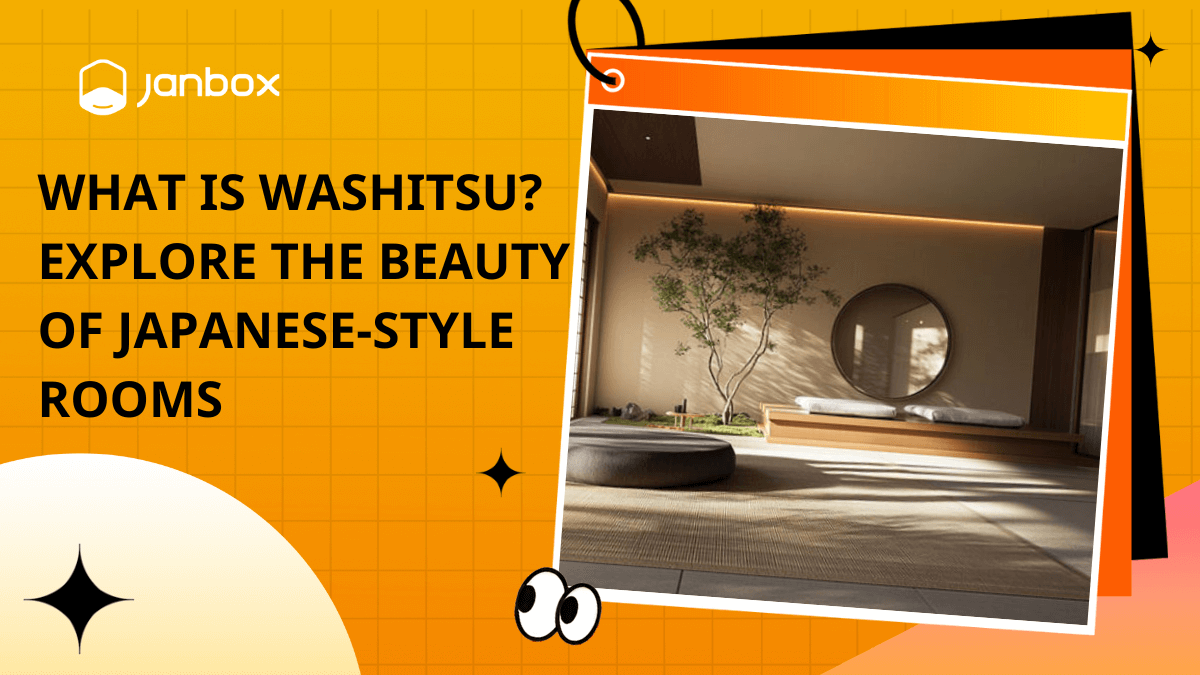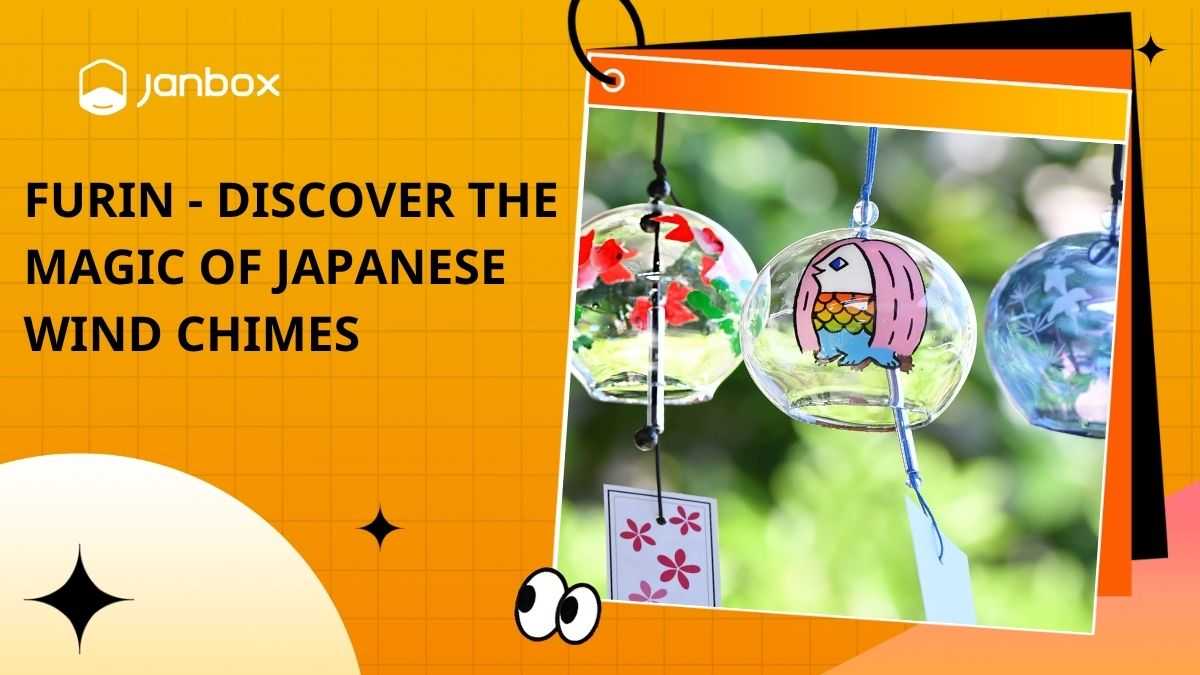In today’s fast-paced world, everyone seeks a peaceful space to unwind after a long day. A Japanese-style room like washitsu offers exactly that, bringing comfort and harmony with nature. Washitsu blends traditional elegance with modern aesthetics to create an ideal living environment. Through this article, Janbox will help you discover the beauty of washitsu, a space deeply rooted in Japanese culture.
1. What Is A Washitsu?
Washitsu is a traditional Japanese-style room designed to create balance between humans and nature. This space exudes tranquility and simplicity while maintaining elegance in every detail. With its distinctive features, washitsu reflects the Japanese philosophy of harmony, minimalism, and refined beauty. More than just a living area, it serves as a sanctuary for relaxation, helping individuals connect more deeply with their surroundings.
Emerging during the Heian period and flourishing in the Edo era, washitsu has historically been more than just a functional space—it embodies the Japanese way of life. In the Heian period, washitsu was primarily found in palaces and aristocratic residences, showcasing the sophistication and artistic sensibilities of the elite. By the Edo period, it became widespread among Japanese households, establishing itself as an essential element of traditional home architecture.
Washitsu is not merely an interior space but also carries profound cultural significance. As a symbol of the wabi-sabi lifestyle, it embraces simplicity, natural imperfection, and the transient nature of all things. This environment fosters serenity, allowing individuals to deeply appreciate stillness and strengthen their connection with nature while cultivating inner balance.
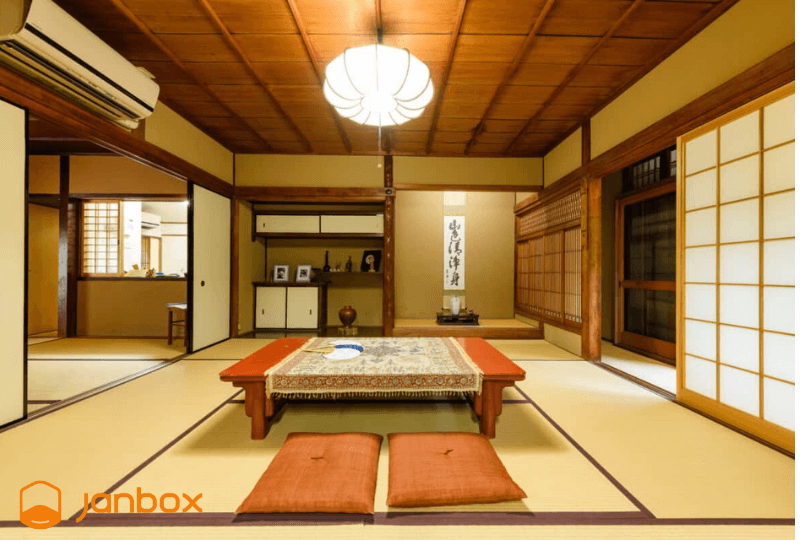
2. Key Elements Of Washitsu Room Design
Washitsu is not just a traditional Japanese space. It embodies the minimalist philosophy and deep connection to nature. The key elements of washitsu contribute to both its aesthetic appeal and its ability to create a harmonious and relaxing environment.
- Tatami Mats: Tatami is one of the most essential components of washitsu, serving not only as flooring but also influencing the overall spatial arrangement. Made from rice straw, tatami provides a soft and natural feel underfoot. Additionally, tatami helps regulate humidity, keeping the room cool in summer and warm in winter.
- Shoji Screens: Shoji screens are sliding panels made of wood and washi paper that allow natural light to filter through, creating a bright and airy atmosphere. Shoji maintains the balance between openness and privacy while ensuring a seamless connection between different areas of the home.
- Fusuma Sliding Doors: Fusuma are opaque sliding doors used to partition spaces within a washitsu. Unlike shoji, fusuma can be adorned with traditional Japanese artwork, adding an artistic and decorative touch to the room. Their flexible design allows for easy expansion or contraction of space depending on the user’s needs.
- Tokonoma Alcove: The tokonoma is a recessed space within a washitsu used to display hanging scrolls, flower arrangements, or other artistic pieces. It serves as a focal point, embodying the refined aesthetics and wabi-sabi philosophy of Japanese culture. Tokonoma not only enhances the room’s beauty but also contributes to a sense of balance and tranquility.
- Minimalist Aesthetic: Washitsu follows the principle of simplicity, utilizing natural materials such as wood, paper, and straw to create a harmonious environment. Its understated design fosters relaxation and balance, aligning with the essence of Japanese living. Washitsu spaces are often free from excessive furniture, optimizing space and ensuring a comfortable atmosphere.
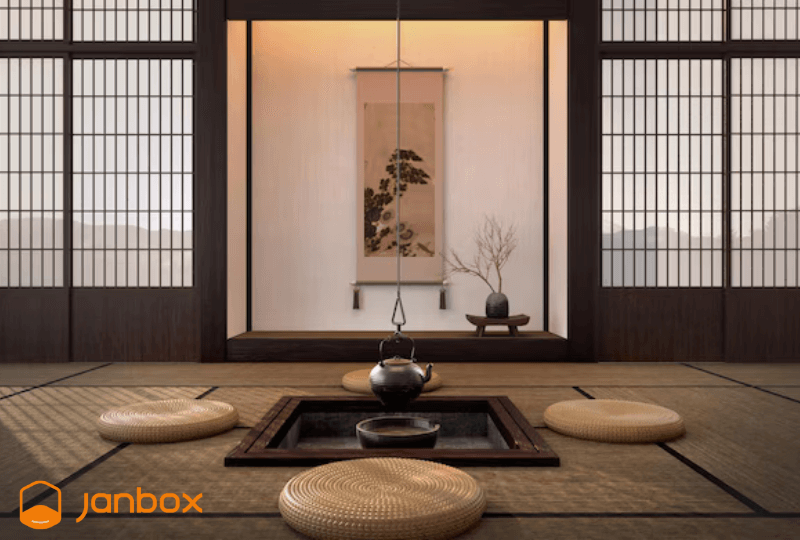
3. Functional Aspects Of Washitsu Rooms
Washitsu is not only a space deeply rooted in Japanese tradition but also highly versatile, suitable for multiple purposes. With its intelligent design and distinctive features, a washitsu room can easily transform from a living area into a sleeping space, offering maximum convenience in daily life.
One of the most notable characteristics of washitsu is its ability to adapt to different functions based on needs. During the day, it can serve as a living room with a low chabudai table and zabuton floor cushions. At night, the space effortlessly converts into a bedroom by laying a futon on the tatami flooring. This design optimizes space usage while ensuring comfort for its occupants.
Washitsu is furnished with traditional elements that create a warm and inviting atmosphere. The chabudai, a low table, is often placed at the center of the room for meals or communal activities. Zabuton, soft floor cushions, provide comfortable seating on tatami flooring.
Traditional Japanese homes often feature an engawa, an outdoor veranda that connects the indoor space with the garden. Shoji sliding doors allow natural light to filter through, creating a gentle and calming ambiance. This integration with nature enhances the feeling of closeness to the environment, helping individuals find balance and relaxation in their daily lives.
>> See more: All About Japanese Chopsticks: A Comprehensive Guide
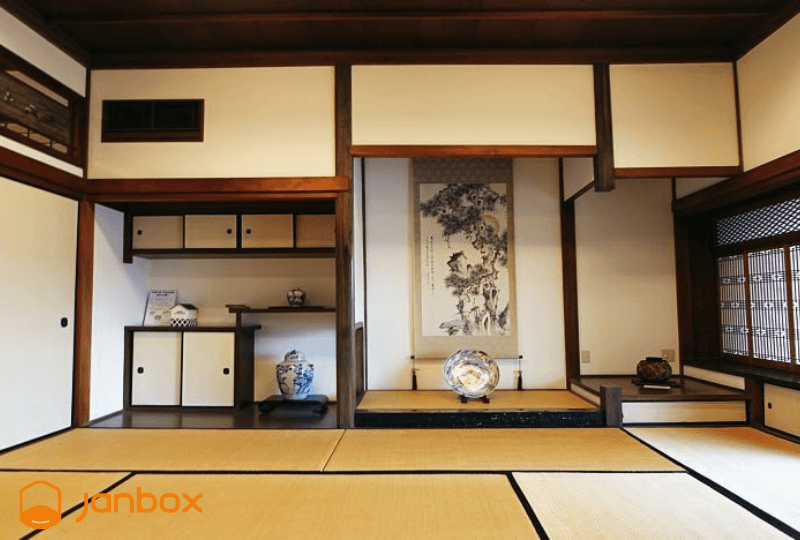
4. Washitsu In Modern Architecture And Interior Design
Nowadays, many modern homes and apartments have incorporated washitsu elements to create living spaces that blend traditional aesthetics with modern convenience. Some designs even combine washitsu with Western interiors, resulting in a unique fusion of both styles.
Beyond Japan, the washitsu style has been embraced by many countries worldwide. With the growing popularity of the wabi-sabi philosophy and minimalist design, numerous international living spaces have drawn inspiration from washitsu to foster a relaxing and balanced environment. Hotels, resorts, and meditation centers across the globe also implement washitsu designs to provide an authentic Japanese experience.
One notable example of washitsu integration in modern spaces is Yoko Onsen Quang Hanh, a hot spring resort in Vietnam. Here, guest rooms are designed in the washitsu style, offering a serene and immersive Japanese experience. Additionally, many contemporary ryokan (traditional Japanese inns) have merged washitsu elements with advanced technology to enhance comfort while preserving cultural authenticity.
>>> See more: Top 30 Japanese Foods: A Taste of Tradition and More
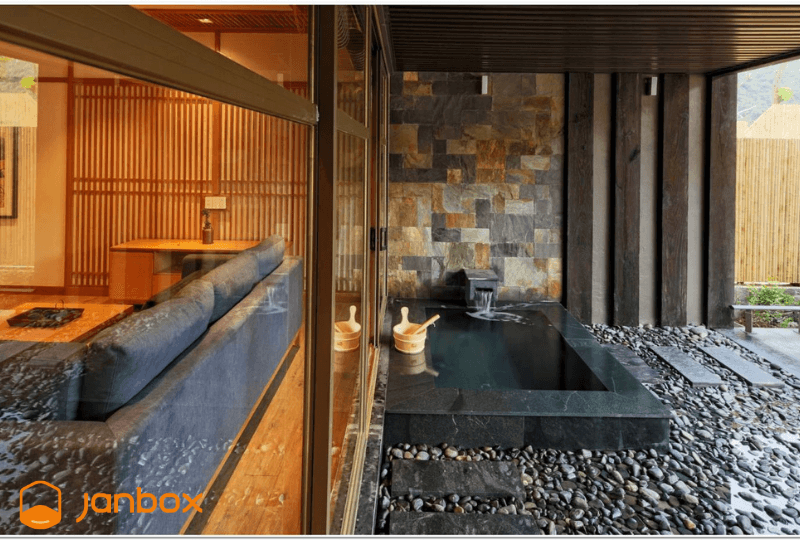
5. Designing Your Own Washitsu Room
Designing a room that embodies the washitsu style is not just about recreating a traditional Japanese space—it is also a way to bring relaxation and harmony into your living environment. To achieve an authentic washitsu room, you need to consider key aspects such as layout, materials, decoration, and maintenance.
Planning and Layout
When designing a washitsu room, choosing the right dimensions is crucial. Room size is typically measured by the number of tatami mats, with each tatami covering approximately 1.8 square meters. A standard washitsu usually consists of 4 to 8 tatami mats, depending on the overall space. The arrangement of tatami should follow traditional guidelines to ensure harmony and good feng shui.
Material Selection
To preserve the authenticity of washitsu, it is best to use natural materials such as tatami, shoji paper, and wood. Tatami mats, made from rice straw, provide a soft and comfortable surface. Shoji paper allows natural light to filter through, creating a bright and airy ambiance. Wooden elements, such as door frames and flooring, enhance the warmth and connection to nature.
Decorative Elements
A well-designed washitsu room incorporates traditional decorative elements. You can use Japanese hanging scrolls, ikebana (Japanese flower arrangement), or lanterns to create focal points. Lighting in a washitsu is usually soft and subtle to promote relaxation. Additionally, setting up a tokonoma alcove—a small decorative space—adds cultural and aesthetic value to the room.
Maintenance Tips
Tatami and other natural materials require proper care to maintain their durability. Regular vacuuming and gentle wiping with a damp cloth help keep tatami clean. Avoid direct exposure to water to prevent mold growth. Shoji paper should be handled with care to avoid tearing. Maintaining a stable humidity level in the room can also help preserve the quality of natural materials.
6. Cultural Practices Associated With Washitsu
Washitsu is not just a living space. It is also the setting for various traditional Japanese cultural practices. These activities reflect the elegance of Japanese lifestyle and the philosophy of harmony between humans and nature.
One of the most iconic rituals held in a washitsu is the tea ceremony (Chanoyu). This practice is not merely about drinking tea but is an art form that embodies Japanese philosophy and aesthetics. Washitsu is designed to create a tranquil atmosphere, allowing participants to focus on each movement, savor the tea, and embrace the serenity of the moment. Elements such as tatami flooring, shoji sliding doors, and the tokonoma alcove play a crucial role in enhancing the solemn and meditative ambiance.
A distinctive feature of washitsu design is the tradition of changing decorations according to the seasons. The tokonoma alcove is often used to display hanging scrolls, flower arrangements, or artistic pieces that reflect the time of year. In spring, cherry blossoms or paintings of blooming landscapes are common. Summer decorations may include ocean or greenery themes, while autumn features red maple leaves, and winter showcases snowy scenes. This seasonal rotation not only refreshes the space but also deepens the connection between people and nature.
Washitsu is accompanied by traditional customs that emphasize respect and mindfulness. Upon entering a washitsu, individuals are expected to remove their shoes to keep the tatami clean and show reverence for the space. When seated, the seiza posture kneeling with legs folded beneath the body is considered the most formal and respectful way to sit. Additionally, movement within a washitsu should be gentle and quiet, preserving the peaceful and meditative nature of the room.
>>> See more: How To Buy From Mercari Japan with Janbox Proxy Service
7. Conclusion
Washitsu is not just a traditional Japanese-style room. It represents harmony between humans and nature. With its minimalist design, natural materials, and refined aesthetics, washitsu creates a serene and balanced living space. Today, this style is widely incorporated into modern architecture, blending tradition with practical functionality. We hope this article, brought to you by Janbox, has helped you gain a deeper understanding of washitsu and how to integrate this style into your living space.
Website: https://janbox.com
Email: [email protected]

